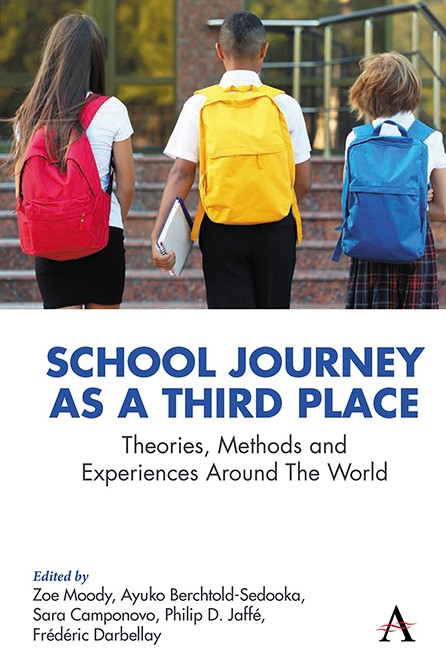Chapter 1 - The Multidimensionality of the Way to and from School: A Third Place for Children?
Published online by Cambridge University Press: 14 November 2023
Summary
Introduction
In recent decades, independent mobility and children’s outdoor leisure time have been significantly reduced in Switzerland, as in most Western countries (Carver et al. 2013; Rivière 2016; Skår and Krogh 2009). However, the results published by Grize et al. (2010) in the trend study on active transportation to school in Switzerland between 1994 and 2005 showed that Swiss children still prefer to use soft or sustainable mobility (walking, cycling or scooter) to go to school. They travel alone or with friends using various means; 65% of children walk and 10% cycle. One in ten children is driven to school by their parents (Pedestrian Mobility Switzerland 2016). However, there has been a slight increase in the number of parents driving their children to and/or from school (or at least once a day). Around 70% of schoolchildren live less than 1.6 km from school (Corso Talento 2010) and this has changed very little over the years, mainly due to the district education system widely adopted in Switzerland, which encourages pupils to attend the school closest to their home. The system favours short journeys and promotes ‘a major integration of schools into the social fabric of neighbourhoods’ (Poretti 2016, 11). However, analysis of the data from various Swiss cantons reveals substantial differences; children in the German-speaking areas are the most significant users (80%) of soft mobility to go to school. This figure falls to 56% in French-speaking regions and to just 25% in the Italian-speaking canton of Ticino (Grize et al. 2010).
Most studies conducted on the journey to school, especially in Switzerland, focus on road safety and health and are generally carried out by researchers for public bodies (see Association Transports et Environnement 2010; Interkantonale Lehrmittelzentrale 2011; Haberer 2010; Kehne 2011). They show that the main risk factors in road safety, from the parents’ point of view, range from the length of the journey to the mode of transport (McDonald 2008), or the number of road crossings to obstacles and problems such as the presence or absence of a pavement or cycle path, or the position of bus stops. However, less is known about how children – the principal users, rather than adults who are merely ‘non-active’ passers-by – commute between home and school.
- Type
- Chapter
- Information
- School Journey as a Third PlaceTheories, Methods and Experiences around the World, pp. 17 - 36Publisher: Anthem PressPrint publication year: 2023



